3 巻, 2 号
選択された号の論文の8件中1~8を表示しています
- |<
- <
- 1
- >
- >|
グラビア
-
2007 年 3 巻 2 号 p. 56-57
発行日: 2007年
公開日: 2007/05/14
PDF形式でダウンロード (252K)
シリーズ カラーアトラス
-
2007 年 3 巻 2 号 p. 59-61
発行日: 2007年
公開日: 2007/05/14
PDF形式でダウンロード (495K)
綜説
-
2007 年 3 巻 2 号 p. 83-88
発行日: 2007年
公開日: 2007/05/14
PDF形式でダウンロード (619K)
原著
-
2007 年 3 巻 2 号 p. 89-95
発行日: 2007年
公開日: 2007/05/14
PDF形式でダウンロード (508K)
臨床医のために
-
2007 年 3 巻 2 号 p. 96-101
発行日: 2007年
公開日: 2007/05/14
PDF形式でダウンロード (744K)
症例報告
-
2007 年 3 巻 2 号 p. 102-104
発行日: 2007年
公開日: 2007/05/14
PDF形式でダウンロード (370K)
症例から学ぶ
-
2007 年 3 巻 2 号 p. 105-108
発行日: 2007年
公開日: 2007/05/14
PDF形式でダウンロード (360K)
話題
-
2007 年 3 巻 2 号 p. 109
発行日: 2007年
公開日: 2007/05/14
PDF形式でダウンロード (165K)
- |<
- <
- 1
- >
- >|
